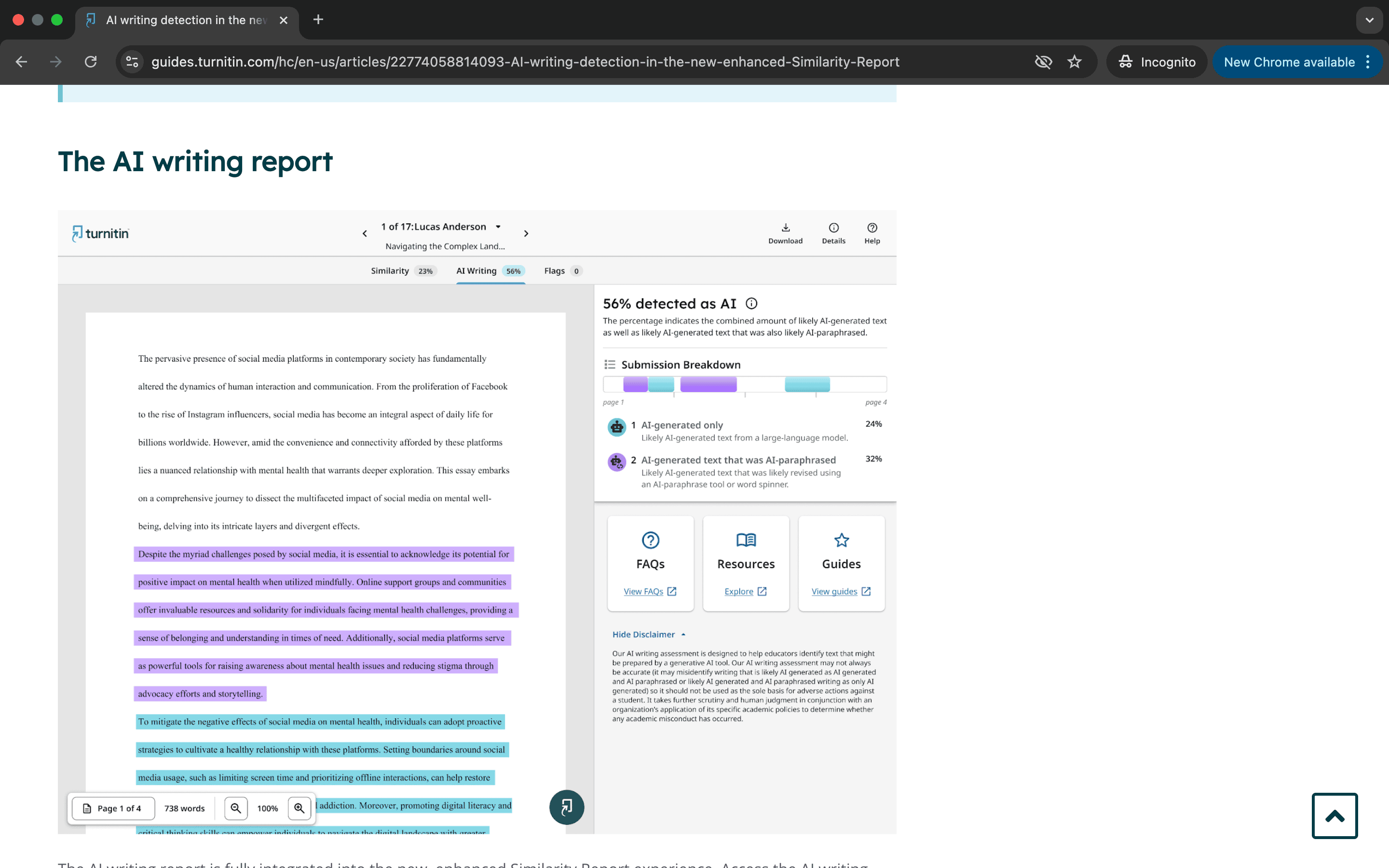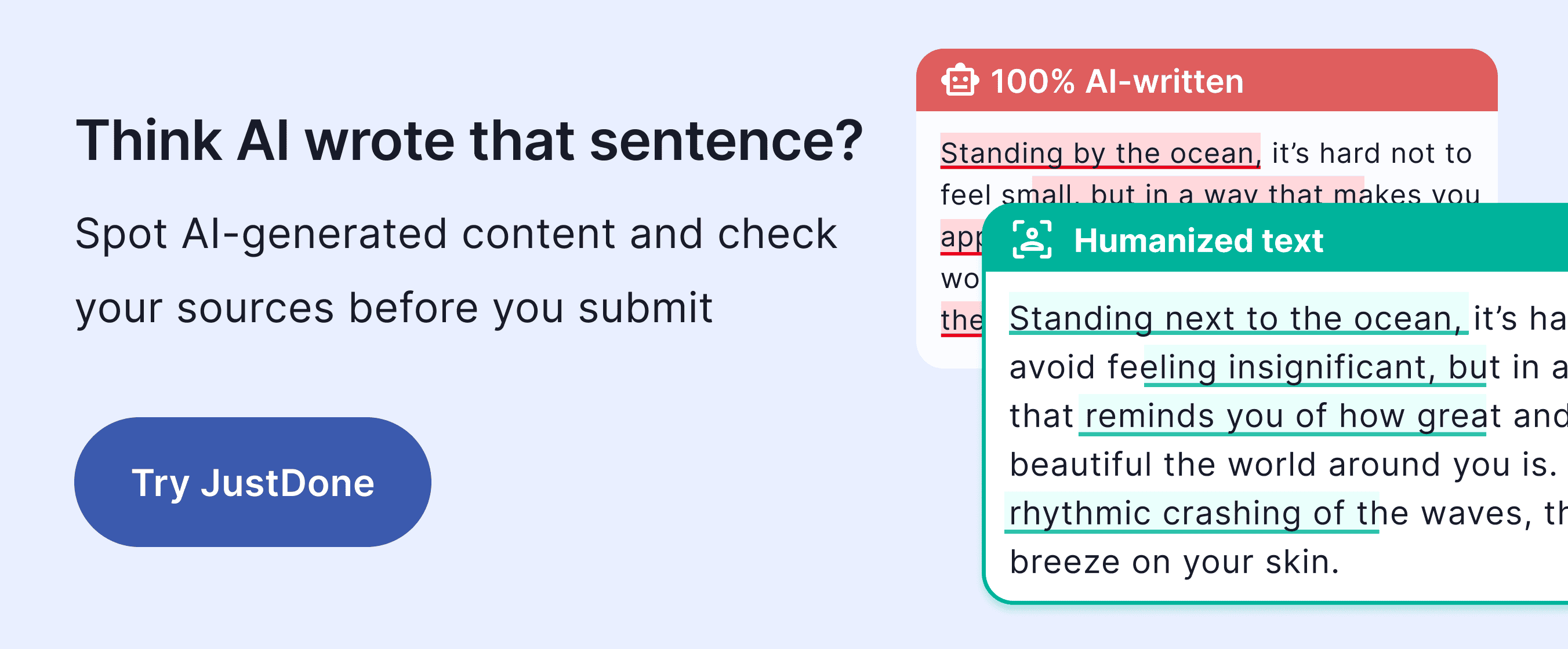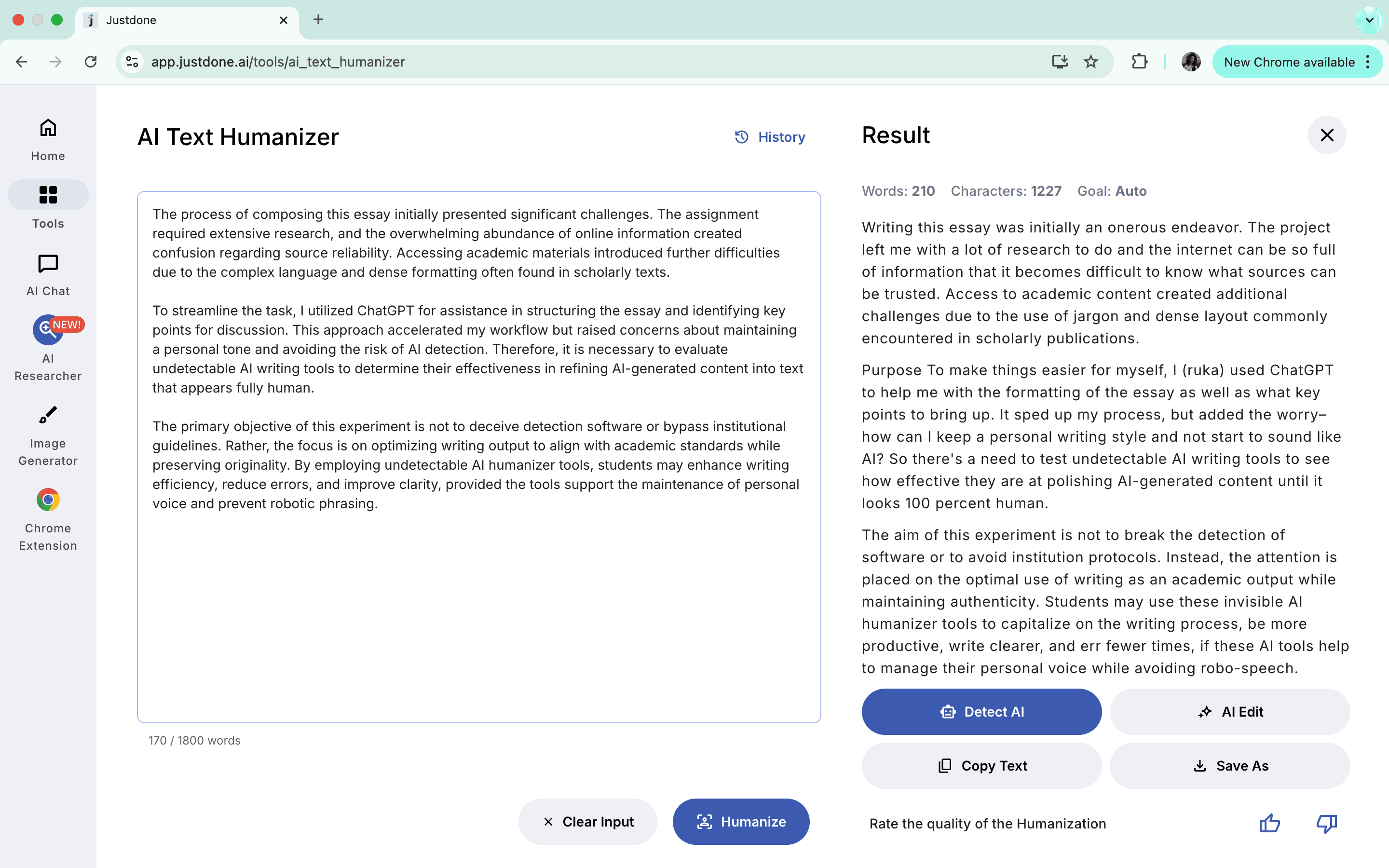When I was in university, a few things stressed me out more than uploading my paper to Turnitin and waiting for that dreaded originality report. I remember the first time I saw a 27% similarity score appear on the screen, and I froze. I thought I’d done everything right. But Turnitin highlighted huge chunks of my essay, and I had no idea why. Over time, I learned that reducing similarity isn’t just about writing “original” content. It’s about understanding how Turnitin works, how AI detection fits into the process, and how to revise your work in a way that keeps you safe without losing your voice. In this article, I’ll also share a trick on how to reduce Turnitin similarity score with AI humanizers.
What Is a Good Similarity Score on Turnitin?
This is probably the most common question students ask me. What is a good similarity score on Turnitin? I used to obsess over this too, refreshing the report and hoping for a green light. In general, most professors are fine with a similarity score under 15%. But the truth is, the number itself isn’t the whole story. It’s about where the matches are coming from.

If your Turnitin originality report shows 15% similarity but it’s just from properly cited quotes or references, you’re probably safe. On the other hand, if the 15% comes from entire paragraphs that match other papers, even if the words are changed slightly, that can still be a problem. I learned this the hard way when a professor flagged my essay because my citations were fine, but the sentence structure too closely followed the sources I’d read. That’s when I realized the Turnitin score isn’t about copying and pasting; it’s about patterns.
So, what is a good similarity score on Turnitin? The short answer is: it depends on the context. For essays heavy on research, a little similarity is normal. For personal reflections or original analysis, your score should be close to zero.
How Accurate Is Turnitin AI Detector?
Now that AI writing tools like ChatGPT are everywhere, another layer of stress has been added: AI detection. Students constantly ask me, how accurate is Turnitin AI detector? I’ve tested it with my own essays and with students I’ve worked with. The results are mixed.
Turnitin’s AI detector is pretty good at catching full AI-generated papers. If you copy and paste straight from ChatGPT into your essay, Turnitin will likely flag it. But sometimes it overcorrects. I’ve had students write their papers completely on their own, in clear and well-structured English, and still get flagged as partially AI-written. That’s because Turnitin looks at patterns, predictability, and phrasing, not just where the words came from.
If you’ve ever wondered how good is Turnitin AI detection compared to other tools, I’d say it’s on the stricter side. Tools like GPTZero and Copyleaks often give you a softer pass, but Turnitin seems built to catch even borderline cases. That’s why I tell students to use an AI detector like JustDone before submitting. JustDone’s checker shows you what might look like AI content so you can revise it before Turnitin gets the first look.

Does Turnitin Similarity Score Include AI?
One of the biggest confusions students face is whether AI-generated text gets counted in the similarity score. So, does Turnitin similarity score include AI? The answer is no, the similarity score and the AI detection score are separate. Turnitin gives professors both reports. One tells them how much of your text matches existing sources. The other estimates how likely your text is to have been generated by an AI.
This is important because a low similarity score doesn’t automatically mean you’re safe from AI detection. I’ve seen students with 5% similarity still get flagged as having AI-generated sections. That’s usually because they used ChatGPT to polish their drafts too much. Sometimes, they copied large chunks of AI-edited text back into their document instead of typing the edits themselves. I once helped a student in that exact situation. She wrote her own paper but asked ChatGPT to fix her grammar. The result was too clean and uniform, and Turnitin flagged it as AI-generated, even though the ideas were all hers.
That experience taught me something valuable: if you use AI tools to help with editing, do it in small pieces. Don’t copy and paste entire sections. Instead, type the edits manually or mix AI suggestions with your own voice. That makes your writing feel more human and less like undetectable AI content.
How to Reduce Turnitin Similarity Score with AI Humanizers
One of the most practical ways I’ve found to reduce a Turnitin similarity score without rewriting everything from scratch is by using AI humanizers. After helping other students and testing this method myself, I realized humanizers are powerful tools for lowering similarity in a safe and ethical way.

If you’ve written something that sounds too close to your sources, or if you used AI help like ChatGPT to polish your draft, chances are Turnitin will pick up on patterns, even if you changed some words. That’s where an AI humanizer comes in.
Instead of just swapping out words like a thesaurus, a good humanizer changes the structure of your sentences, shifts the rhythm, and rewrites the phrasing in a more natural way. This makes your text sound more like something you’d actually say or write, not something copied or reworded by a machine. The goal isn’t to cheat; it’s to make your writing genuinely your own while keeping the core ideas intact.
The tool I recommend most for this is JustDone AI Humanizer. I’ve personally tested it with my assignments and even with papers written by other students who asked for help. What makes JustDone different is that it doesn’t just paraphrase, but it understands tone, context, and flow. You paste your text into the tool, choose the level of humanization you need, and it rewrites your draft with new sentence patterns that sound natural but don’t trigger similarity matches the way basic rewriters do.
Here’s how I usually do it. After writing my first draft, I run it through JustDone’s plagiarism checker to see which sections might get flagged by Turnitin. If I find problem areas (sections that are too close to source material or too AI-polished), I copy just those sections into the JustDone AI humanizer. The tool rewrites them with varied structure and new language but keeps my points unchanged. Then I paste the improved version back into my essay, check the citations, and run one last plagiarism scan. Almost every time I’ve done this, my similarity score has dropped significantly, sometimes by half, while keeping my ideas clear and readable.
Using an AI humanizer is not about fooling the system. It’s about learning to edit and refine your writing in a smarter way, especially when you’ve used AI tools during the drafting process. It helps you keep your work authentic, avoid accidental plagiarism, and reduce the stress of that Turnitin originality report.
Conclusion: Use AI Tools the Right Way to Beat Turnitin Similarity Score
If you’re wondering how to beat Turnitin or if you can bypass its detection system, the answer is simple: don’t try to cheat it, learn how to work with it. Use tools like JustDone’s AI detector and similarity checker to revise your drafts before you submit. Write in your own words, cite everything properly, and don’t rely too much on paraphrasers or AI rewriters.
What is a good similarity score on Turnitin? For me, it’s one where I can explain every single match in the report. It will help you be confident that your work is your own.
Reducing similarity is about becoming a better writer, not just passing a test. And that’s the lesson I wish someone had taught me when I was staring at that first red Turnitin score. The good news is, once you understand the process, you’ll never have to stress about it again.